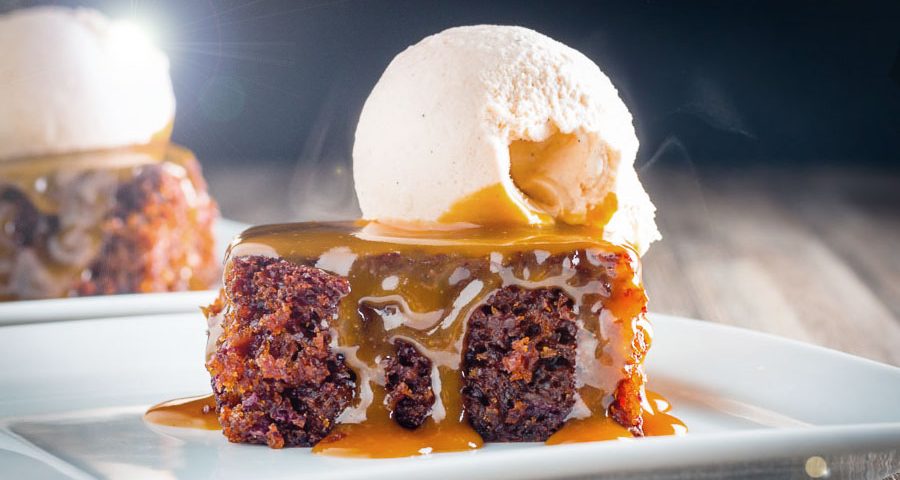Sticky Toffee Pudding: a History
Sticky Toffee Pudding: a History

Gosh, we’ve been so focused on our savory menu items over the past few months! Guess it’s time to sweeten things up a bit. Behold the sticky toffee pudding, a sticky, spongy, sugary sensation that will make you go, “Wow, why don’t I have more of this in my life?”
What is it?
As is common in the Commonwealth, the sticky toffee pudding isn’t the creamy, liquid-y dessert we’re accustomed to in North America. Rather, it is a sponge cake consisting of chopped dates and toffee sauce. It’s also typically paired with vanilla ice cream or custard because it complements the dish so nicely. Trust us, you won’t want to go without it.
History
Compared to the more historical Yorkshire or Bread puddings, the sticky toffee pudding is still in its school trousers. It was only invented in the 1940s, which is kind of a shame, because it probably would’ve made a lot of people happy through the ages.
Anyway, the exact origins of the recipe are kinda vague. However, we can generally trace it back to two Canadian air force officers and a British hotel manager. During the Second World War, the officers lodged at a hotel in Lancashire. While there, the chaps gave the recipe to the hotel manager, a woman named Patricia Martin. That’s right, this yummy pudding was created by Canadians!
Decades later, Martin gave the recipe to Sharrow Bay Country House Hotel employees Francis Coulson and Robert Lee. They were the first people to publically sell this sticky sensation, which inevitably became an international smash.
Fun Facts
- The delectable toffee sauce that’s drizzled around the pudding is made of butter, double cream, and sugar
- Sticky toffee pudding is the cousin of a very similar Australian dish, the sticky date pudding. Both are worth trying!
- A healthier variation of sticky toffee pudding can be made by substituting sugar with artificial sweeteners and soy creamer instead of milk and eggs
